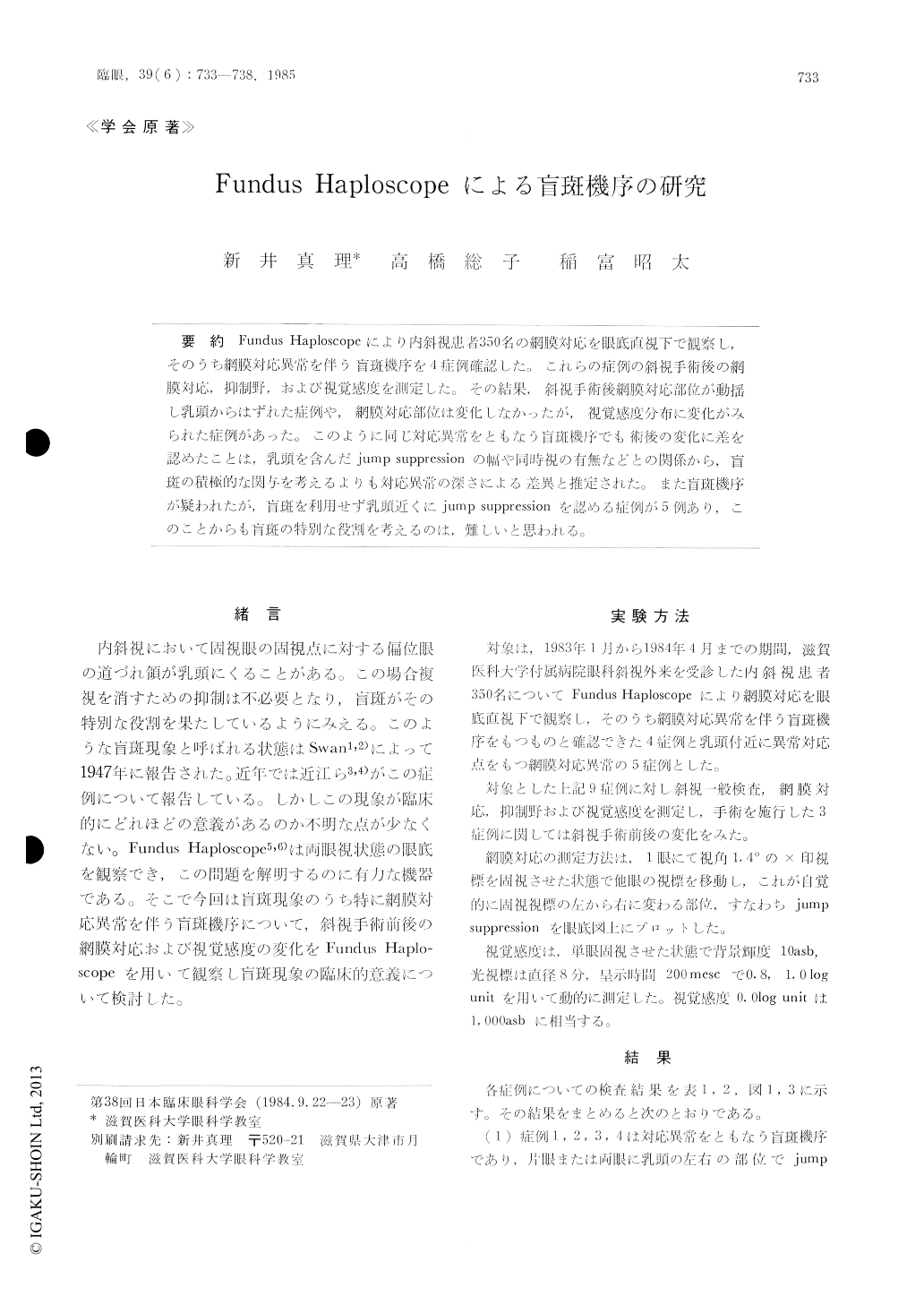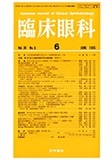Japanese
English
- 有料閲覧
- Abstract 文献概要
- 1ページ目 Look Inside
Fundus Haploscopeにより内斜視患者350名の網膜対応を眼底直視下で観察し,そのうち網膜対応異常を伴う盲斑機序を4症例確認した.これらの症例の斜視手術後の網膜対応,抑制野,および視覚感度を測定した.その結果,斜視手術後網膜対応部位が動揺し乳頭からはずれた症例や,網膜対応部位は変化しなかったが,視覚感度分布に変化がみられた症例があった.このように同じ対応異常をともなう盲斑機序でも術後の変化に差を認めたことは,乳頭を含んだjump suppressionの幅や同時視の有無などとの関係から,盲斑の積極的な関与を考えるよりも対応異常の深さによる差異と推定された.また盲斑機序が疑われたが,盲斑を利用せず乳頭近くにjump suppressionを認める症例が5例あり,このことからも盲斑の特別な役割を考えるのは,難しいと思われる.
The fundus haploscope fulfills the functions thatcan be performed by conventional major amblyo-scopes. Besides, it allows monitoring the fundus along with the target slides with the use of attached infrared TV camera.
Blind spot mechanism (Swan 1917) is defined as instances of esotropia in which the squinting eye is so deviated that its blind spot plays the role of central scotoma.
We evaluated 4 cases with the blind spot mech-anism with abnormal retinal correspondence us-ing the fundus haploscope. In 3 cases, the point of abnormal retinal correspondence (ARC), which coincided with the direction of the fovea of the fixating eye, changed after quints surgery. Thepoint of ARC remained unchanged in the other case.
We further observed 5 cases with esotropia in which the point of ARC was located near but not on the optic disc.
These observations seemed to suggest that the blind spot may not play a particular role even in the so-called blind spot mechanism.

Copyright © 1985, Igaku-Shoin Ltd. All rights reserved.


